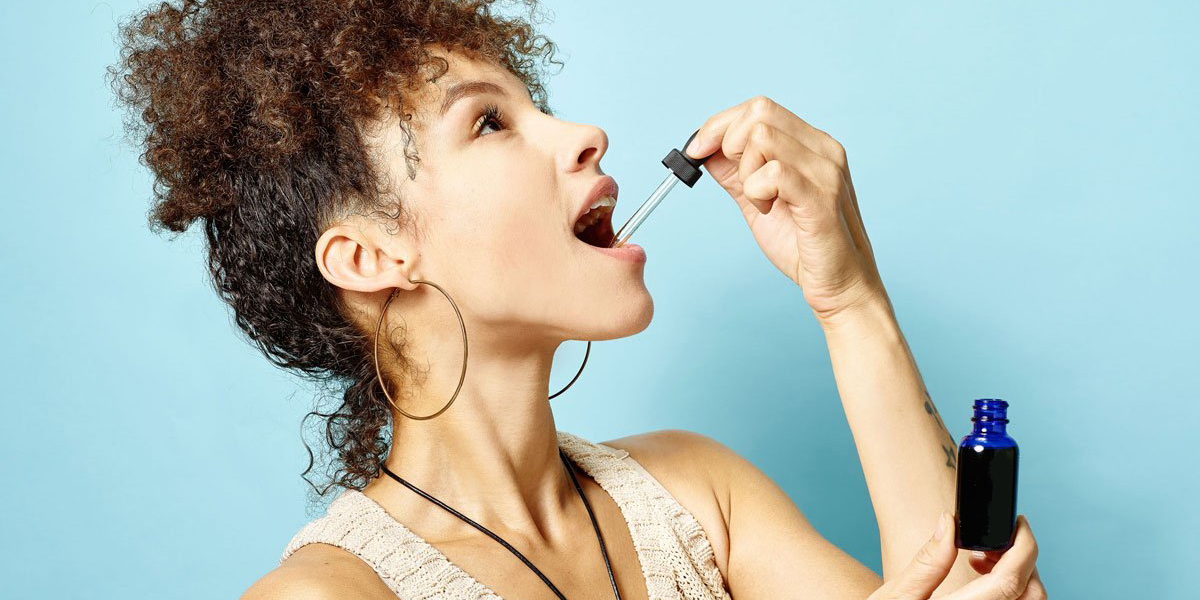How Does the Body Absorb CBD?

Scientists are regularly learning more about cannabidiol (CBD) and how it interacts with receptors throughout the body to elicit balancing and healing effects. Studies suggest that CBD may be able to minimize and even eliminate seizure activity, reduce anxiety and depression, manage pain, fight some cancers, and provide anti-inflammatory and neuroprotective effects that could potentially be beneficial for conditions like Alzheimer’s disease and arthritis. For CBD to have influence over our systems, the natural non-psychoactive compound first need to be absorbed.
When we talk about the absorption of CBD, we’re referring to its transfer from the site of administration to the bloodstream, where it can then be transported throughout the body to interact with or influence cannabinoid receptors CB1 and CB2, and non-cannabinoid receptors like serotonin receptor 5-HT1A and vanilloid receptor TRPV-1.
How CBD is absorbed depends on the route of administration, or how it’s consumed. Whether CBD oil is ingested, situated under the tongue, inhaled, or applied topically plays an important role in the uptake, distribution, and elimination of the compound. It can therefore influence how effective cannabinoid treatments will be at eliciting their natural balancing effects.
Absorption After Ingestion and Sublingual Methods
The most common route of CBD oil administration is orally, or through the mouth. When CBD is ingested, it is absorbed by the digestive system. From the stomach, the compounds enter the hepatic portal system, where they are carried through the portal vein into the liver. The liver then metabolizes the CBD molecules, in what’s referred to as the “first pass effect.” CYP450 mixed function oxidases enzymes in the liver act upon CBD, reducing the concentration of the compounds before passing on what remains to the bloodstream.
Ingestion, while considered by most to be the easiest administration method, isn’t the most efficient for absorbing high levels of CBD. Studies have found, however, that consuming CBD Oil with fatty acids can help bypass first pass metabolism and increase how much CBD is absorbed through ingestion.
If CBD oil is held under the tongue for 60 to 90 seconds before being swallowed, the mucus membranes in the mouth can absorb the compounds. This sublingual method allows CBD to completely bypass the digestive system and liver metabolism, so the compounds can avoid being broken down by enzymes and reach the bloodstream more quickly.
Also, the way in which you ingest CBD can drastically predict how much of the compound will actually affect your body (a property called bioavailability). For example, if you take 100 milligrams of CBD oil orally, only 15 milligrams of the cannabinoid will actually reach your bloodstream. Why? Well, CBD is hydrophobic, meaning it doesn’t really mix well with water. In your system, instead of staying in the bloodstream, it prefers to accumulate in the fatty tissue. (1)
Moreover, after oral consumption, CBD travels to your liver. Here the chemical will undergo the ”first-pass effect.” This phenomenon describes the liver’s tendency to reduce the concentration of bioactive compounds through either chemical breakdown or absorption. (2)
Absorption After Inhalation
When CBD oil in inhaled, such as through vaporization, the compounds are absorbed through the alveoli in the lungs, which offer a large absorptive surface area. Once through the alveoli, the CBD molecules are immediately transferred into the bloodstream. Compared to ingestion, the inhalation method allows more CBD to be absorbed and offers faster absorption.
Should you be vaping CBD? In theory, it makes sense. During vaporization, CBD diffuses directly into your bloodstream through the lungs, instead of going through the digestive system and liver. This increases its bioavailability to an average of 35 percent. (3) Of course, embracing the vape life sometimes isn’t an option, and it can be difficult to find a clear, homogeneous CBD vape solution. Generally speaking, vaping can be the quickest way to get the CBD into your system, but can be the shortest duration because of how quickly it can be used in the body.
Absorption After Topical Application
When CBD oil is applied topically, or directly to the skin, it never reaches the bloodstream but can be absorbed through the skin’s surface to interact with nearby cannabinoid receptors.
Human skin in general has low permeability, which means it blocks most substances from entering. The skin has a particularly low absorption rate for cannabinoids, so application of CBD balms, salves, and lotions need to be heavy enough to overcome this barrier. However, when applied liberally, CBD is permeable to the skin through its pores.
Now that you know that the way that CBD is absorbed varies depends on the administration method, you may decide that one method is more ideal than another depending on your needs. However, selecting the method with which you feel most comfortable is important as you’ll more likely be able to be consistent with your servings.
CBD Serving Sizes and Methods of Administration
If you are planning on using CBD for any reason or purpose, it’s best to start with a small amount and work your way up until you find the level that works for you. Most products will come with a serving size on the packaging.
CBD products come in different strengths and are available in a range of formats. Tinctures and concentrates containing CBD-rich hemp oil, for example, are some of the strongest forms and are easily measurable and quick to start working.
You must always do your due diligence from where you are getting your CBD, how they manufacture it, how bioactive is it, and what purity are you working with. You can get that from any reputable source through their third party certifications that should be readily given upon asking for it. Once you know, then you can correctly gauge how many milligrams you are gaining with each time you choose to partake.

